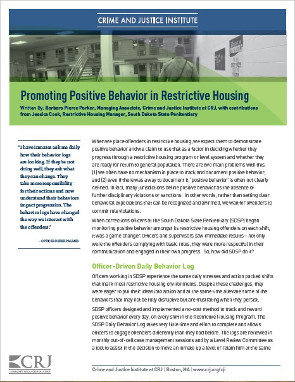
When we place offenders in restrictive housing, we expect them to demonstrate positive behavior and we claim to use that as a factor in deciding whether they progress through a restrictive housing program or level system and whether they are ready for return to general population.
There are two main problems with this: (1) we often have no mechanism in place to track and document positive behavior; and (2) even if there was a way to document it, ‘positive behavior’ is often not clearly defined. In fact, many jurisdictions define positive behavior as the absence of further disciplinary violations or sanctions. In other words, rather than setting clear behavioral expectations that can be recognized and affirmed, we wait for offenders to commit rule violations.
Click here to read the report.